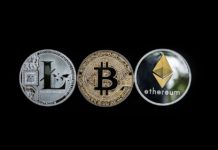 Technological innovations have transformed the way people work, behave, play and interact. For example, in 1995, there were around 16 million internet users around the world. Today, almost four billion people are using the internet. Vast web implementation has driven advancements from financial services to healthcare. But along with this fast-growing innovation, it has come with high expectations among consumers for modified products, communications, and other services. For many marketers, the digital disturbance has moved too swiftly. Together with opportunities to engage precise audiences, there are also new tests. With multiple touchpoints, it has become progressively challenging to trail consumers across channels and gadgets, and even painful to determine which advertising and marketing campaigns are more effective.
Technological innovations have transformed the way people work, behave, play and interact. For example, in 1995, there were around 16 million internet users around the world. Today, almost four billion people are using the internet. Vast web implementation has driven advancements from financial services to healthcare. But along with this fast-growing innovation, it has come with high expectations among consumers for modified products, communications, and other services. For many marketers, the digital disturbance has moved too swiftly. Together with opportunities to engage precise audiences, there are also new tests. With multiple touchpoints, it has become progressively challenging to trail consumers across channels and gadgets, and even painful to determine which advertising and marketing campaigns are more effective.
It’s reported that 40% are under pressure to establish the return on investment. To safeguard success, marketers are recommended to embrace measurement strategies that offer an exact and holistic view of the presentation. It’s the highest time that we exactly ask ourselves where innovation has taken us and what can be necessarily be done to keep up with the fast-moving progression. Previously, Brands only used project messages only via one channel. They used Print, Televisions, and radios. However, the web has enabled the consumers to interact with other Brands according to their agenda and pace. It has also allowed an unremitting, mutual dialogue among brands and consumers through a broader range of touchpoints.
Since then, the advancements of new technologies have been intense. Significant innovations have been witnessed from wearables, smartphones to all other intelligent staff. There has been increased consumer demand for convenience and speed. With the outcome of these devices, there has arisen multiple ways for users to view information, connect with brands and browse products. According to reports, the average consumer uses at least three of their seven smart gadgets on a daily basis. 79% of the users switch screens in every mid-activity.
Marketers can now be able to reach out to consumers quickly, anywhere and at any time. This is because many more channels have now become addressable. The information needed to trail touchpoints in the consumer’s path and customize individual experiences is in boundless supply. Marketers are in need of a measurement model that perfectly works with modern consumer journey and also interprets different data from addressable channels into a combined presentation overview. This means that they are in need of a means that require a more innovative and multi-faceted resolution that issues a granular insight.





